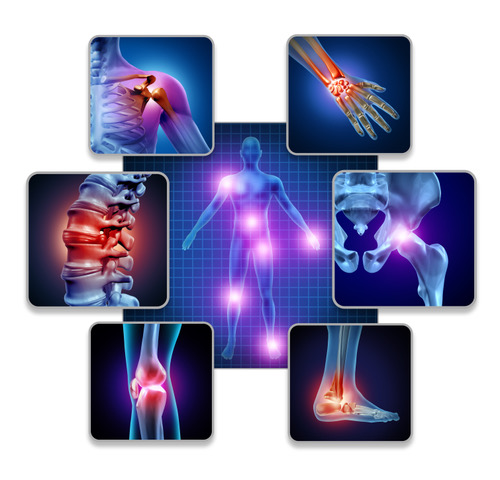Understanding the Difference between Osteoarthritis and Rheumatoid Arthritis

Introduction
Arthritis is a term we often hear, but did you know that there are different types of arthritis with their own unique characteristics? In this blog, we will explore two forms of arthritis: osteoarthritis (OA) and rheumatoid arthritis (RA). By understanding their differences, we can gain insight into these conditions and how they affect our joints and overall well-being.
Cause and Pathology
Osteoarthritis: Often referred to as the “wear and tear” arthritis, osteoarthritis is caused by the gradual breakdown of joint cartilage over time. Factors like aging, joint injuries, repetitive joint use, and obesity can contribute to its development. As the protective cartilage erodes, joint pain, stiffness, and reduced mobility become prominent.
Rheumatoid Arthritis: Unlike osteoarthritis, rheumatoid arthritis is an autoimmune disease. The body’s immune system mistakenly attacks the synovium, the lining of the joints. Although the exact cause remains unknown, genetic and environmental factors are believed to play a role. The immune response triggers inflammation in the synovium, resulting in joint pain, swelling, stiffness, and even joint deformity.
Symptom Presentation:
Osteoarthritis: Symptoms of OA develop gradually and worsen over time. Joint pain, often exacerbated by activity and relieved by rest, is a common complaint. Stiffness after periods of inactivity, joint swelling, tenderness, and reduced range of motion are also experienced. OA typically affects larger joints like the knees, hips, hands, and spine.

Rheumatoid Arthritis: RA often manifests with symmetrical joint involvement. It means that the same joints on both sides of the body are affected. Symptoms can appear suddenly or gradually and include joint pain, swelling, warmth, and stiffness, which is usually worse in the morning or after inactivity. RA primarily targets smaller joints such as those in the hands, wrists, and feet, but larger joints may also be affected.
Systemic Effects:
Osteoarthritis: OA primarily impacts the joints and does not generally affect other organs or body systems. However, the pain, reduced mobility, and lifestyle changes associated with OA can indirectly affect one’s overall well-being.
- Worse with prolonged use
- Eases with rest
- Night pain with progressive arthritis
Rheumatoid Arthritis: RA is not limited to joint symptoms alone; it is a systemic autoimmune disease. In addition to joint pain, swelling, and stiffness, individuals with RA may experience fatigue, low-grade fever, weight loss, eye inflammation, lung inflammation, and cardiovascular complications. Complications like rheumatoid nodules, vasculitis, and increased risk of osteoporosis can also arise.
It is important to detect symptoms of RA early as inflammatory mediators can contribute to a progressive destruction of joint tissue unless treatment is started (Guo et al., 2018)
The British Society for Rheumatology (BSR, 2015) published a policy report ‘12-week window of opportunity’ in which to positively affect patient care by referring appropriately to a rheumatologist within this time.
Treatment Approaches:
Osteoarthritis: Managing OA focuses on symptom relief and improving joint function. Non-pharmacological approaches such as exercise, physical therapy, weight management, and assistive devices play a crucial role. Pain-relieving medications like acetaminophen and non-steroidal anti-inflammatory drugs (NSAIDs), along with joint injections, may also be recommended. Massage can also be a valuable tool because of its effect on down regulation of the nervous system and its effects on pain reduction.
Lauren (Sports Therapist) and Debbie (Soft Tissue Therapist) attended The Therapy Expo in Birmingham last year and one very inspiring talk was given by a Chris a Physio from “Never too old to lift” He told us of an elderly gentleman with osteoarthritis who wanted to lift his grandchildren and play with them. He started strength training and went from sitting in his armchair to lifting weights – a truly inspirational story and proof that as human beings with a bit of determination and will power fantastic results can be achieved!
Rheumatoid Arthritis: Treating RA aims to control inflammation, relieve symptoms, prevent joint damage, and enhance overall well-being. Medications such as NSAIDs, corticosteroids, and biologic agents are commonly used. Physical therapy, occupational therapy, regular exercise, and lifestyle modifications are also vital components of RA management.
What is degeneration?
The Oxford English dictionary describes degeneration as:
” deterioration and loss of function in the cells of a tissue or organ”
This sounds scary and leads us to believe that it is important for pain but the truth is we will all have some form of degeneration, some people will be walking around with degeneration of a disc or ankle without even knowing it is there. This means that what sounds abnormal are just part of normal life. Just like our skin ages so does the inside of our bodies. You cant change arthritis but you can change how you see and manage pain. This topic is covered further on our blog ‘what is pain’.
Rheumatoid Arthritis vs Osteoarthritis at a glance
| Osteoarthritis | Rheumatoid Arthritis |
| Gradual onset | Gradual or rapid onset |
| Effects Joints | Not limited to joints alone |
| ‘wear and tear’ of joints | Autoimmune disease |
| More common in men before aged 45. More common in women after age 45 | 2 – 3 times more common in women |
| More common with age and often begins in middle age | Can happen at any age, most common in middle age |
| Often fades within 30 minutes of waking | Can last for over 30 minutes after waking |
| Effects different joints to different degrees | Usually effects the same joints on both sides |

